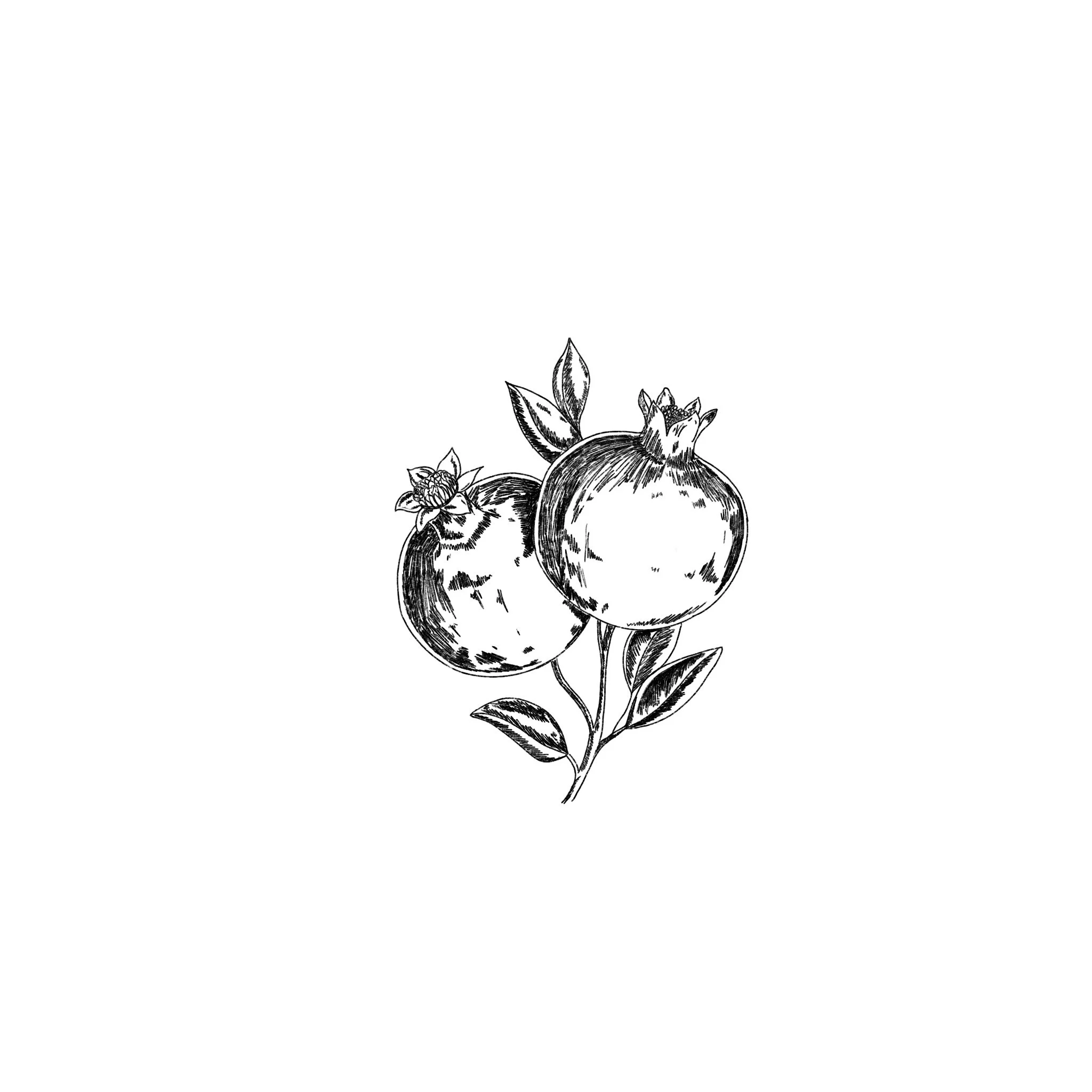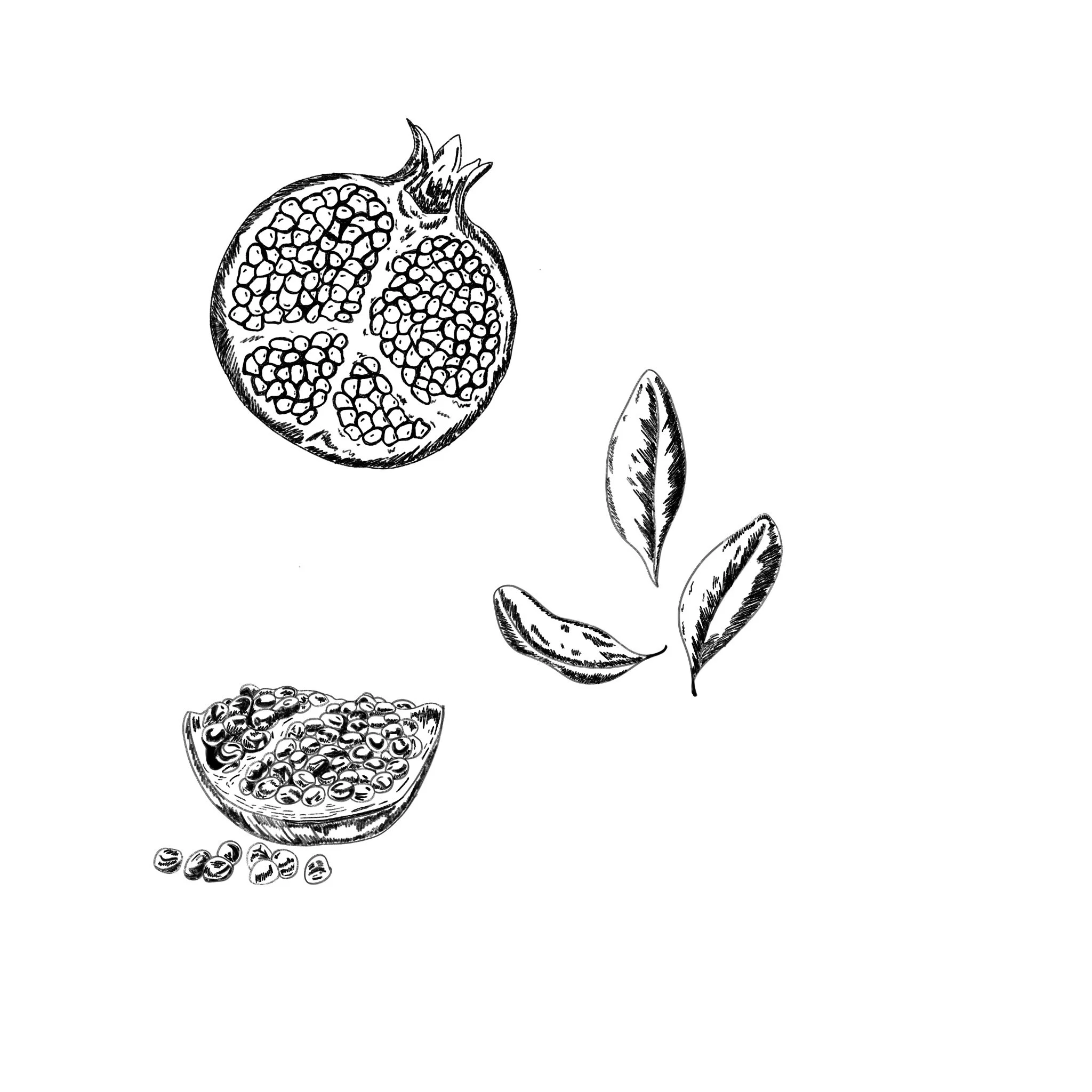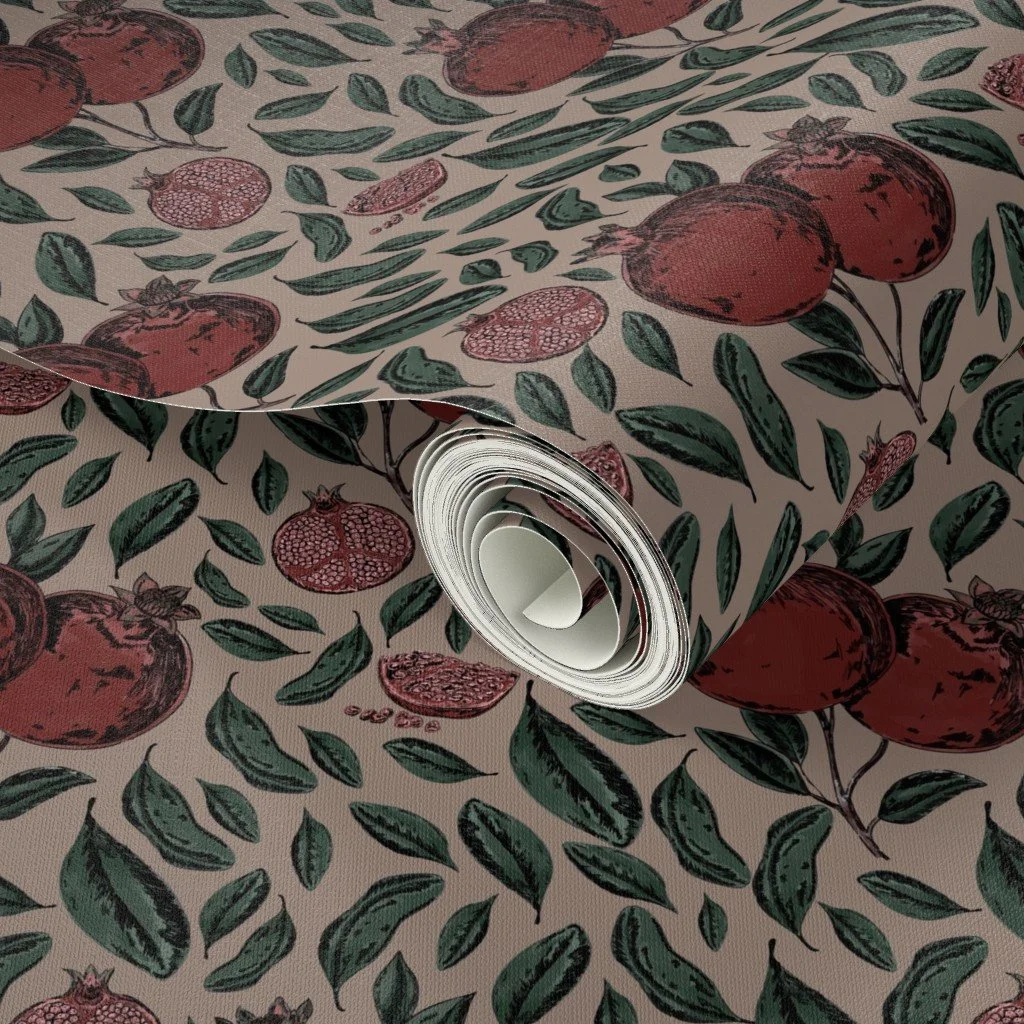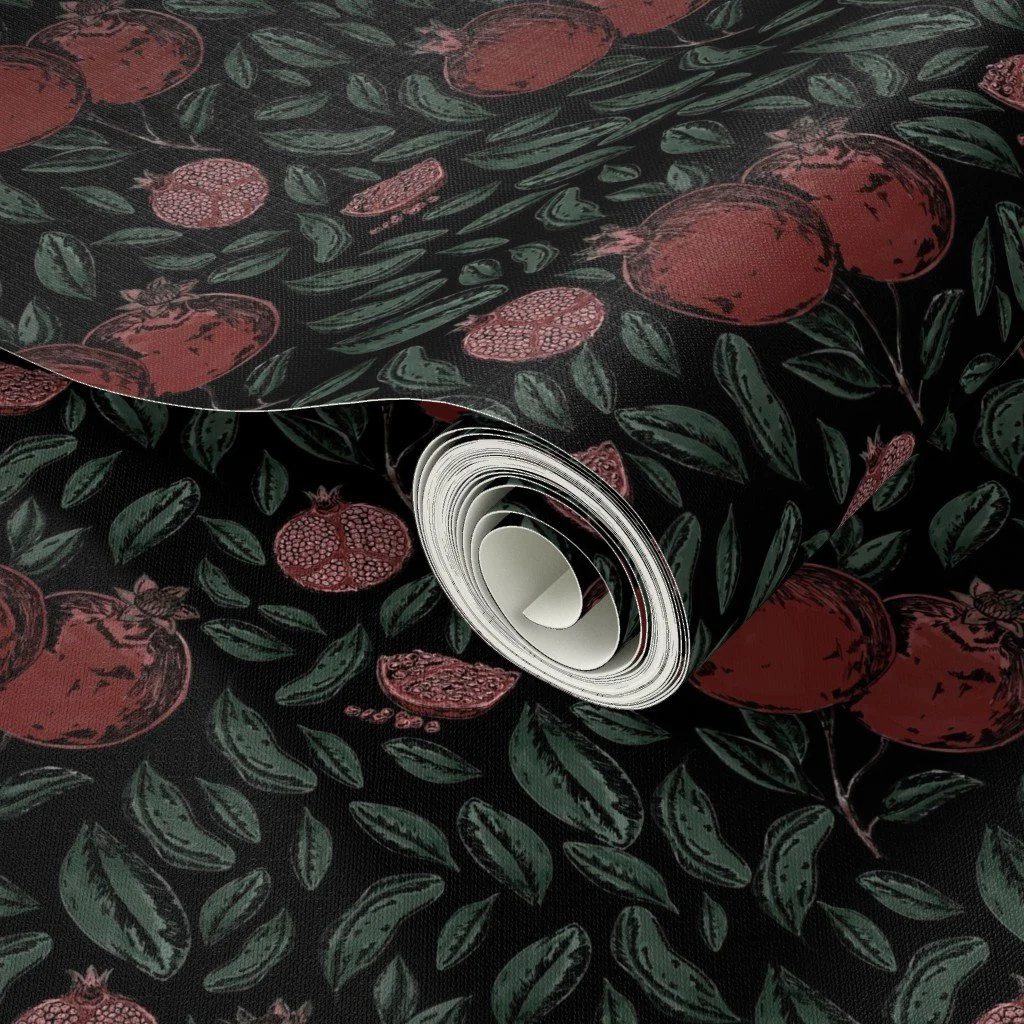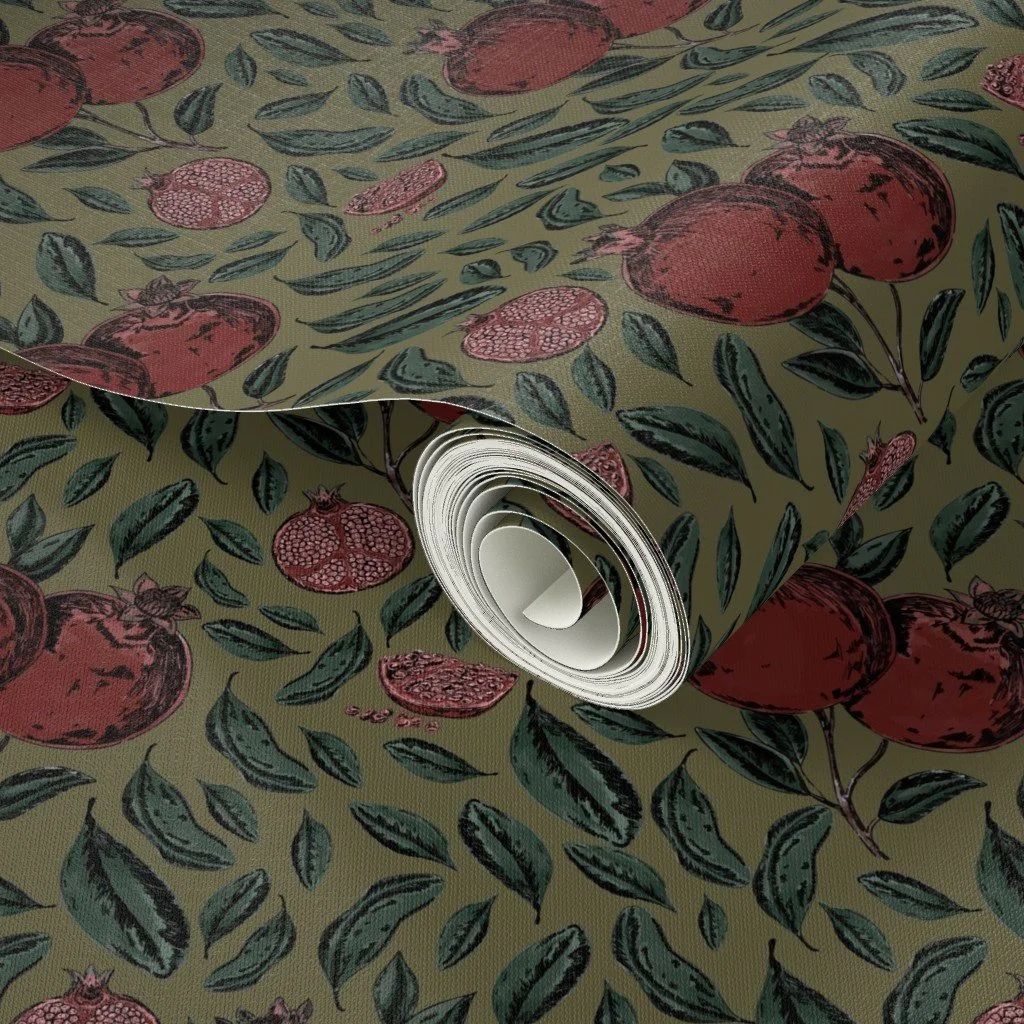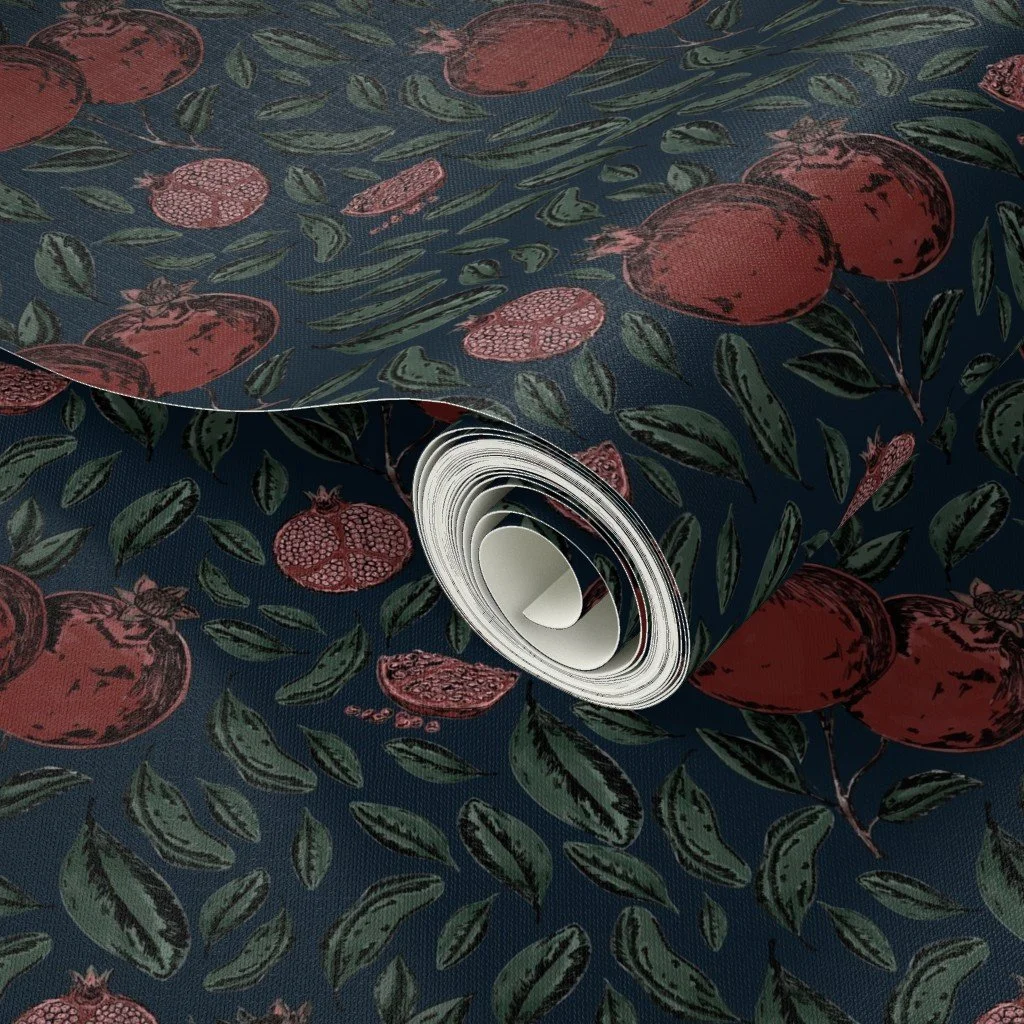A Pomegranate in the Wild: The Making of a Pattern
It began with a small brass pomegranate, quietly perched on the blue door of a perfectly weathered building in the English countryside.
Not a grand estate, not a famous landmark; just a timeworn mill tucked among hedgerows, a babbling brook and elder trees, where the fog moves slow and the walls seem to hum with memory. The kind of place where you half expect to hear the clink of teacups from behind the ivy.
But it was the door knocker that caught my attention. Simple. Ornate. Solid in the way old things often are. A hand holding a pomegranate, cast in brass, hanging there like a quiet secret. It didn’t ask to be noticed, but I did. And once I saw it, I couldn’t stop thinking about it.
The Weight of Small Things
I’ve always believed inspiration lives in the unnoticed corners: a soft light through dusty curtains, the lining of a coat, the peculiar sound of rain on an iron roof. I keep a running list of these moments, not in any formal notebook, but scattered through the margins of my days.
That pomegranate made its way in. I didn’t know what it would become…only that it asked to be drawn.
Pomegranates are old. Older than most things we decorate with. They show up in ancient myths, embroidered in church vestments, painted into medieval manuscripts. A fruit full of contradictions: sweet and bitter, fertile and blood-like, holy and sensual. A crown-shaped blossom, a thousand seeds. Entire civilizations have pressed meaning into its skin.
In the middle of modern life, with emails, deadlines, screens, a heavy brass pomegranate on a crooked door felt like a message from another world. And I listened.
Inspiration found on a weathered door in the English countryside
Sketchbook Studies
On the airplane ride home, I couldn’t get that pomegranate out of my head. I began with pencil. Not to design a pattern…not yet…but just to understand the shape of it. I drew it whole and sliced, blooming and shrinking, crowned and fallen. I traced the arc of the fruit again and again, letting my hand learn what my eye remembered.
This is the part of the process I rarely share, because it’s so unpolished. Smudged paper. A cup of tea gone cold. Little notes in the margins: too stiff or try rounder leaves or what if it glowed like old gold?
Eventually, one sketch felt like it held the weight of the moment. It wasn’t an exact copy of the door knocker; it was something new. Something imagined, grown from the seed of memory.
The raw, behind-the-scenes process
Initial studies exploring the pomegranate’s form and texture
From Motif to Pattern
Turning a drawing into a repeating pattern is equal parts poetry and puzzle.
You begin with a single image, a motif, and then carefully build the world around it. Supporting elements are added, like leaves, blossoms, dots of light. You experiment with rhythm: Should the fruit feel formal and regal? Scattered and wild? Should it repeat like a song or meander like a garden path?
I tried both.
Eventually, the pattern settled into something quiet and orderly, but still organic, like wallpaper found in a forgotten parlor, where everything smells faintly of lavender and old books.
Color came next. Deep garnets and dusty pinks, hunter greens and moody sage. I kept returning to the feeling of burnished brass and the deep red of a ripe seed. A palette that feels both grounded and a little mythical, like the fruit itself.
Early color tests
Building the repeat. Motif refined for symmetry and rhythm
Becoming Surface
There’s always a moment in this process (and it never stops being a little bit magic) when you see your pattern applied to something real.
That moment came when I unrolled the first sample of wallpaper.
The pomegranates, once a sketch in my notebook, were now blooming across paper like they’d always belonged there. Their shape, their weight, their symbolism…everything felt intact. Honest. A little romantic.
I imagined them in a study filled with books and velvet drapes. Or in a kitchen where the kettle always sings. Or on linen fabric, sewn into cushions, draped over a bench, whispering a little mystery into a quiet room.
Now available as both wallpaper and fabric, this pattern feels like a chapter in a much longer story - one that began at a forgotten door in the countryside and will now unfold in the rooms and lives it enters.
A Motif of Meaning
At House of Thayer, every pattern begins with a story. Sometimes the story is loud and vivid, sometimes it’s quiet: barely a thread. But it’s always there.
This pomegranate is about small beauty. About paying attention. About letting one meaningful object change the way you see the world for a little while.
It’s also about symbolism. Fruit as history. Ornament as memory. Pattern as preservation.
I think of it as a modern heirloom. Something designed not to be trendy, but to feel like it could’ve existed 50 years ago and 50 years from now. The kind of piece that might get passed down or wrapped in tissue paper or found again in a drawer with a handwritten note.
Now part of the House of Thayer collection — a modern heirloom born of old-world charm
Take It With You
If you’d like to bring this pattern into your own space, you can now find it as:
Wallpaper – available by the roll on Spoonflower
Fabric – suitable for upholstery, drapery, or sewing projects also on Spoonflower
I hope it brings a little quiet richness to wherever it lands. A reminder that inspiration often knocks softly, and that beauty lives in the details.
Thank you, as always, for following along.
PS:
What’s the last everyday object that sparked something in you?
A flower pressed in a book? A doorknob shaped like a star?
Tell us in the comments - we'd love to hear.



